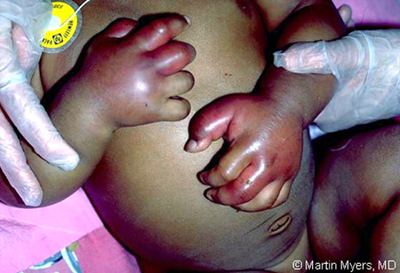Paratyphoid Fevers And Non-typhoid Salmonella Infections: Epidemiology, Clinical Manifestations, Diagnosis & Treatment
Characteristics Of Non-typhoid Salmonella Infections

General Introduction As Infectious Ailments
These are produced by Salmonella paratyphi A and B respectively. The illness generally resembles typhoid in clinical pattern, though the toxemia and complications are milder. The duration of illness is shorter and the moratlity is lower in paratyphoid. Diagnosis is made by isolating the organisms and demonstrating the antibody response by widal reaction. Principles of management are the same as for typhoid.
Non-typhoid Salmonella Infections
These are produced by S. enteritidis and S. typhimurium which are transmitted from animals to man. The lesions include acute enterocolitis, bactermia and localized inflammation.
Epidemiology: Infection is acquired through food and water. Many animals such as chicken, ducks, cattle, sheep, horses, dogs, cats and rodents harbor these organisms as commensals. Chicken and duck eggs constitute the largest reservior of infection. Egg powder, milk powder, fish and mussels grown in contaminated water have acted as the sources of localized outbreaks. Humans develop convalescent or asymptomatic carrier state and excrete the organisms for long periods.
Pathology: After gaining entry, the organisms multiply in the small intestine and colon and produce inflammation of the lamina propria of the villi. The lymphoid follicles are enlarged and the mesenteric nodes become swollen. Organisms enter the blood stream to produce bacteremia and metastatic lesions. Conditions like sickle cell anemia and other hemoglobinopathies predispose to the development of recurrent Salmonella infections. Osteomyelitis is common in them.
Clinical Manifestations Of Enterocolitis

Infectious Diseases
Clinical Manifestations
Enterocolitis: This is also known as Salmonella food poisoning. It is characterized by fever, with abdominal pain and diarrhea lasting for 3 to 5 days. The incubation period is generally 8 to 24 hours, sometimes it goes up to three days. Nausea and vomiting are early symptoms. The nature of stools varies from blood stained semisolid feces to watery diarrhea. Even after recovery, a malabsorption state may persist for several days. Microscopy of the feces shows cellular exudates and the organisms can be cultured from feces.
Salmonella bacteremia: This is characterized by prolonged or intermittent fever associated with rigor and chills and a positive blood culture. Gastrointestinal symptoms may or may not precede the onset of bacteremia. Localized lesions develop in 25% of cases. These are bronchopneumonia, lung abscess, pleurisy, empyema, pericarditis, endocarditis, nephritis, arthritis, osteomyelitis and meningitis.
Diagnosis: Salmonella bacteremia should be suspected in all prolonged fevers and the diagnosis should be established by blood cultures. The WBC count is usually normal but leucocytosis occurs when localized suppuration develops.
Treatment: Salmonella gastroenteritis is managed on the same lines as other severe diarrheal diseases, the mainstay of treatment being replacement of fluids and electrolytes and supportive therapy. Antibiotics do not probably alter the course of the disease and hence their role in treatment is doubtful. Bacteremia or localized infections are treated with systemic antibiotics as for typhoid fever.
© 2014 Funom Theophilus Makama









